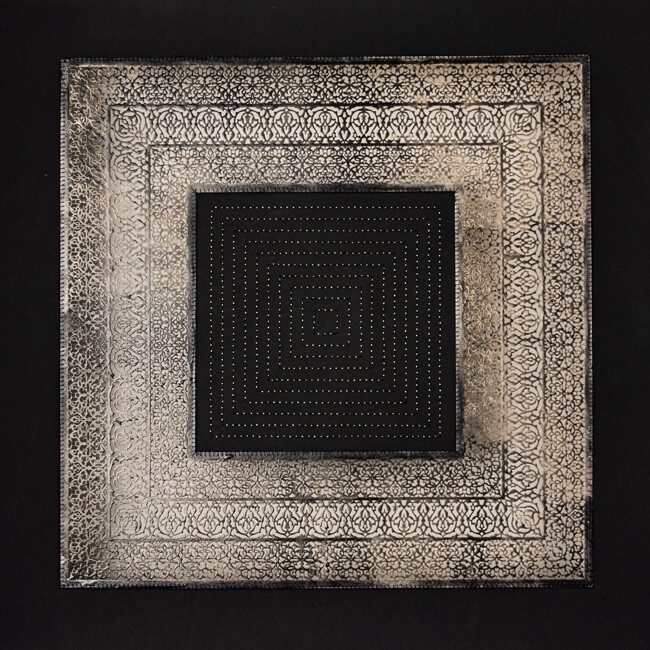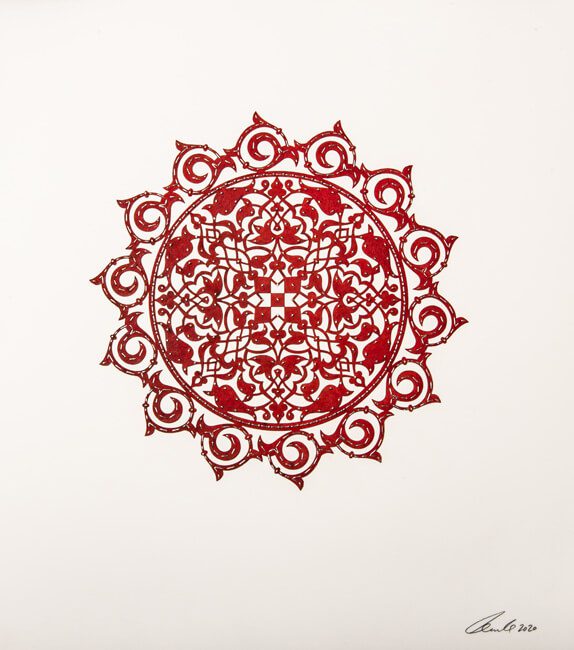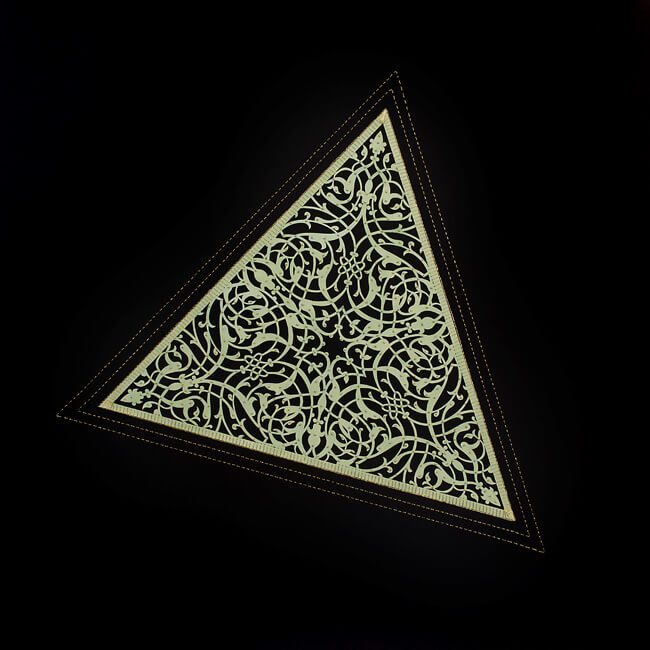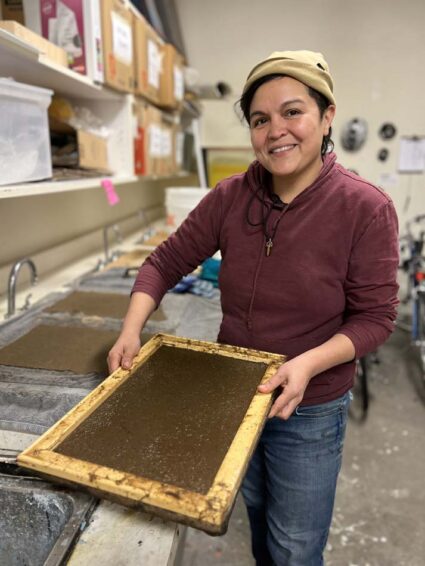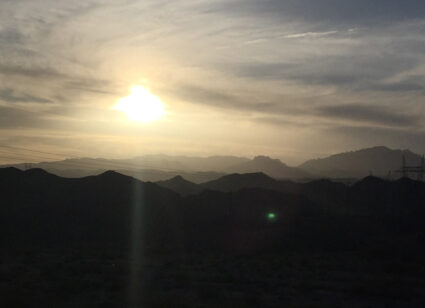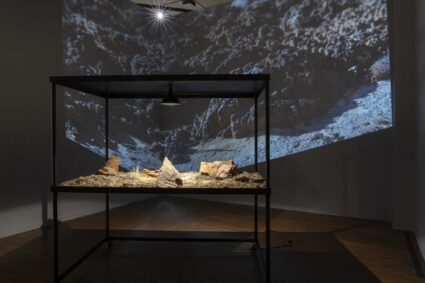UNM Art Museum in Albuquerque presents an exhibition by Anila Quayyum Agha, a Pakistani American artist whose work is influenced by women’s social issues.
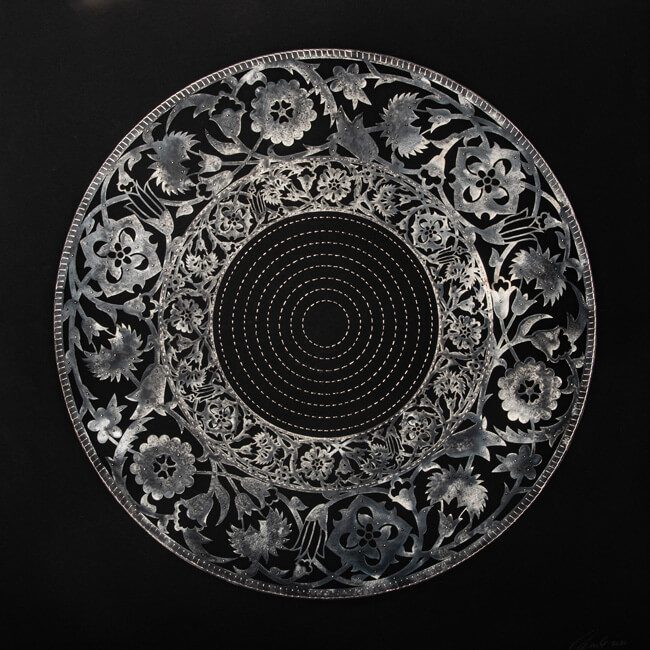
ALBUQUERQUE, NM—Anila Quayyum Agha is my teacher, at least I like to think of her that way after my conversation with her. Using the cell phone as our classroom and personal experience as our curriculum, Agha has offered informal yet wise lessons, two of which have recently taken up residence in the forefront of my mind: the delicacy of hope and the mystery of meaning.
Mysterious Inner Worlds, Agha’s first solo exhibition in New Mexico, is scheduled to be on view from February 18 through July 2, 2022 at the University of New Mexico Art Museum in Albuquerque. Filling the museum’s main and Van Deren Coke galleries with seven new mixed-media drawings and four sculptures—including the large scale immersive light installation Intersections and the debut of the artist’s new sculpture Steel Garden (Red)—the show, believed to be the first of its kind at the UNM Art Museum, is poised to enrapture museum visitors.
Agha first captured the attention of Mary Statzer, UNM Art Museum curator of prints and photographs, a few years ago when museum director Arif Khan introduced Statzer to the artist’s work. Immediately impressed by its beauty and complexity, Statzer began discussing with Khan the possibility of mounting an exhibition for Agha, who’s currently based in Georgia and teaching art at Augusta University.
For close to fifteen years, Agha has been using light, shadow, pattern, scale—and now color—to create immersive installations that foster feelings of belonging and, as a result, hold a kind of hope. In each of our conversations, she expressed her desire to create these spaces for people regardless of gender, race, religion—a result of her own experience in Pakistan where, as a woman, she was denied access to Islamic sacred spaces.
“My artwork began with my interest in social issues that affect women, separately, but then also extended to other displaced people for the barriers they face,” she says. “I care that everybody feels safe in the spaces I create and that the audience members are able to address things on an intimate yet public level.”
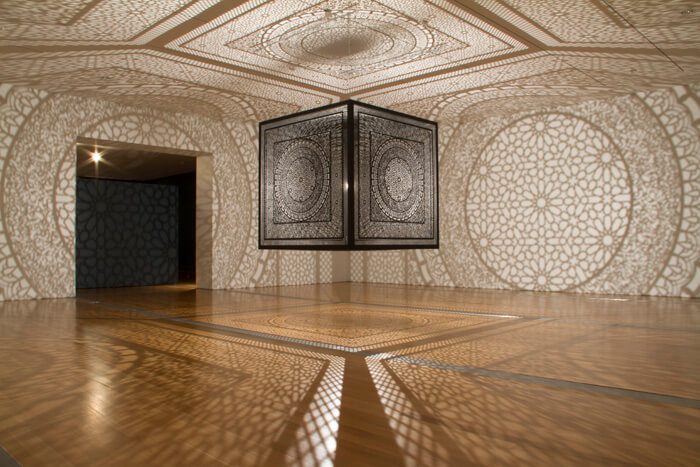
Women’s labor and skill—including that of immigrants which the art world at large tends to exclude and undervalue—heavily inform her two-dimensional works in the exhibition. Agha’s background in textiles and drawing, memories of and lessons learned from her mother’s quilting circles, and visiting the Alhambra in Spain all help her find meaning and strength in a collage of multicultural references. She has also been impacted by books such as The Subversive Stitch: Embroidery and the Making of the Feminine, Women and Gender in Islam, and Against White Feminism: Notes on Disruption.
Agha’s collage sensibility extends to her use of materials in her two-dimensional works as well: thread, beads, encaustic wax, charcoal, pastel, and cut paper and mylar. Through layering and stitching, activating light and casting shadows, these works mimic the dynamism of the sculptures in Mysterious Inner Worlds.
For example, Intersections, a steel, black lacquer cube with repeating patterns of intricate open latticework comprising each side panel, is suspended from the ceiling and lit from within by a single light source. Light travels through the geometric and organic radial designs of positive and negative space, casting shadows on the floor, ceiling, and for this installation, the blue walls.
As visitors have walked through past instances of the installation and around the cube, they were at once gently confronted with and invited to consider the material presence of the work and its meaning relative to their own experiences. The space is transformed, perception is altered, and darkness is illuminated. Intersections makes visible the inextricable relationships between seemingly opposed states of being.
With Steel Garden (Red), made of red lacquered steel cut into delicate flower motifs, Agha explains that she wanted to create a feeling of urgency. The piece is installed as a long, narrow shallow relief sculpture in three layers against a creamy yellow wall, referencing landscape, mounting global pressures, and the importance of seeing what is so often overlooked.
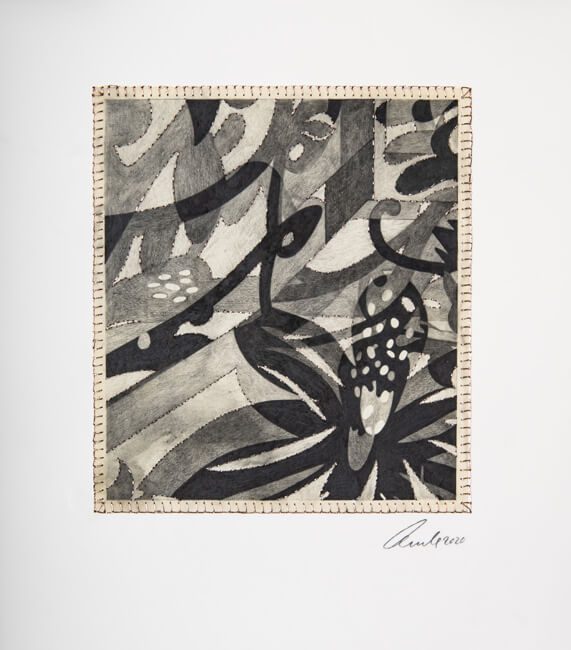
“My inspiration was a little drawing [Albrecht] Dürer did in 1503 titled Great Piece of Turf… just a little patch of weeds,” says Agha. “Every time I look at it, I’ve been fascinated by such a simple thing that he elevated to such a high level, turning it into a beautiful drawing.”
She tells me that the climate crisis, and the global response to its devastating impact on vulnerable populations, encompasses the social issues and conditions she has been talking about since the beginning of her professional career. Mysterious Inner Worlds is another opportunity to draw attention to those concerns by fostering kindness, empathy, and inclusion.
In terms of the exhibition taking place on the main Albuquerque campus, Statzer says, “UNM Art Museum is committed to showcasing a range of diverse creative voices. This is the first time, to my knowledge, that the art of a Pakistani American woman has been shown on campus, so that is a significant step forward… with the pandemic and other challenges we currently face, it feels like the right exhibition for this moment.”
